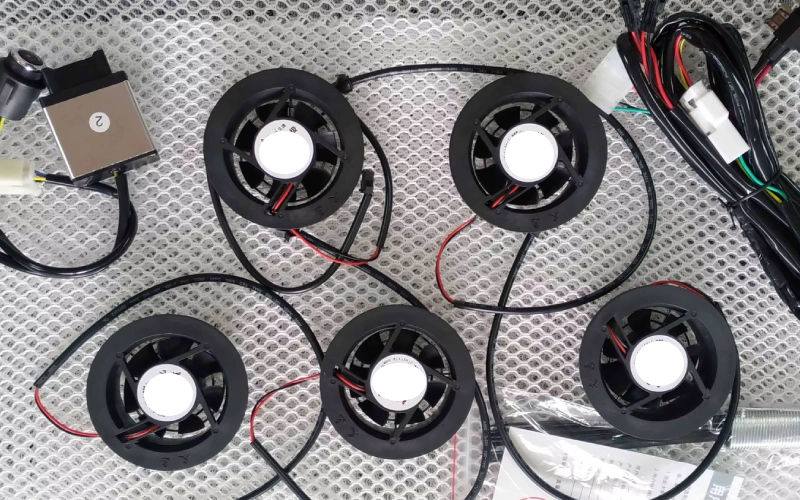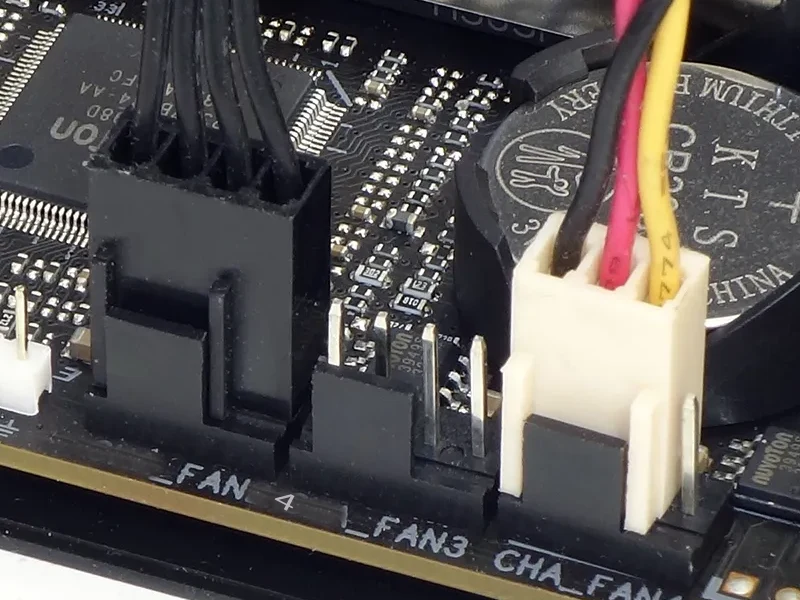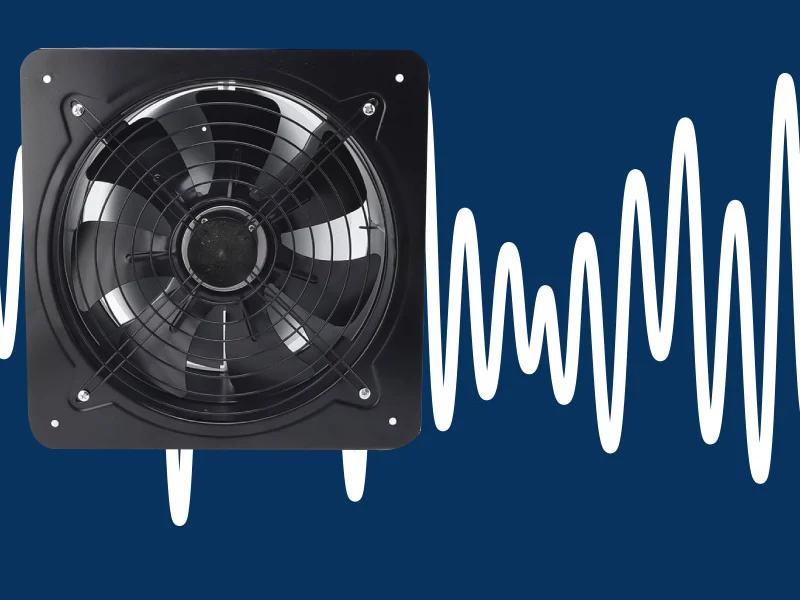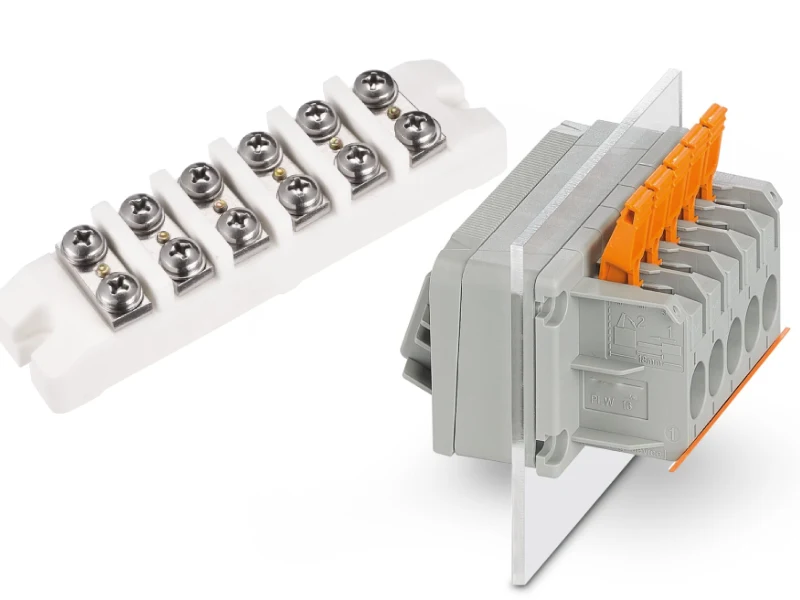If you’re wondering which seat keeps you cooler with the help of axial fans, you’ll find that ventilated seats use this technology. Axial fans push air through the seat, giving you a breezy, comfortable ride. Cooled seats go a step further by adding active cooling, not just moving air. Comfortable seats do more than just feel nice. They help you drive longer without getting tired and support your posture. Drivers often notice less fatigue and better focus with supportive seats. When you ask how do cooling seats in cars work, it comes down to airflow, cushioning, and smart design.
Key Takeaways
- Ventilated seats use axial fans to move air through the seat, keeping you dry and comfortable without cooling the air.
- Cooled seats provide a stronger chill by using fans and cooling elements, making them ideal for hot weather.
- Consider your climate and driving habits when choosing between ventilated and cooled seats for maximum comfort.
- Both seat types can enhance your driving experience, but cooled seats may require more maintenance and cost.
- Look for cars with advanced cooling features to enjoy a quieter, more personalized ride.
Axial Fans in Car Seats

How Axial Fans Work
You might wonder how those breezy air-conditioned seats actually keep you cool. Axial fans play a big part in making this happen. These fans move air in a straight line, right along the shaft, which makes them perfect for tight spaces like car seats. When you sit down, the fan starts pushing air through the seat’s tiny holes. This steady airflow helps remove heat and moisture, especially on hot days or after a workout. You feel fresher, and your clothes stay dry.
Here’s what axial fans do for air-conditioned seats:
- Maintain a steady airflow so you don’t get sweaty or sticky.
- Remove moisture and heat from the seat surface.
- Boost comfort for both drivers and passengers.
Axial fans work better than other types, like centrifugal blowers, because they fit easily inside the seat and move air efficiently. You get a cooling effect without bulky equipment.
Let’s break down the mechanical principles behind axial fans in car seats:
| Principle | Description |
|---|---|
| Airflow | Creates high airflow for effective ventilation. |
| Pressure Dynamics | Blade design results in lower pressure, which works well in confined spaces. |
| Ducting Resistance | Air movement resistance can reduce efficiency over longer distances. |
Linkwell Axial Fan Example
If you’re curious about what makes a fan reliable, take a look at Linkwell’s axial fan technology. While these fans are designed for industrial use, their features show what you should expect from high-performance cooling systems. Linkwell fans use shaded pole capacitor motors and pure copper coils for durability. They run quietly, with noise levels below 60 dB(A), so you won’t get distracted by buzzing sounds.
Here’s a quick look at what sets Linkwell fans apart:
| Feature | Details |
|---|---|
| Motor System | Shaded pole, NMB ball bearings |
| Temperature Tolerance | -30°C to 80°C |
| Lifespan | 50,000 hours |
| Airflow | 1030 m³/h |
| Protection Rating | IP44 for dust and splash resistance |
| Safety Certifications | CE, 3C, RoHS, UL |
Linkwell fans use industrial-grade materials and optimal airflow design, which means they last longer and keep systems stable. You want your air-conditioned seats to offer the same kind of reliability and efficiency, so you stay comfortable every time you drive.
Ventilated Seats
How Ventilated Seats Work
When you sit down in a car with ventilated seats, you notice the difference right away. These seats use a clever system to keep you cool and dry. Inside the seat, small axial fans pull fresh air from the cabin and push it through the seat’s foam padding. The seat has tiny holes and a porous mesh that let the air flow right up to your body. This design helps prevent sweat from building up, even if you drive for hours.
The fans work quietly under the seat cushion and backrest. They create a gentle breeze that moves through the seat, keeping the contact surface dry and comfortable. You get steady air circulation, which means less heat and moisture between you and the seat. The system also uses a diffusion layer to spread the air evenly, so you don’t feel hot spots or sticky patches.
Tip: If you want to stay comfortable on long drives, ventilated seats can make a big difference, especially in warm weather.
Benefits and Drawbacks
Ventilated seats offer several advantages that you will appreciate:
- They prevent sweating and reduce body heat.
- The seats help extend the life of your car’s upholstery.
- You enjoy a more comfortable ride, especially in summer.
- Some users say ventilated seats ease back pain and muscle tension.
- These seats can even boost your car’s resale value.
However, there are a few drawbacks to consider:
- The design of some seat covers can block airflow, making the cooling less effective.
- Ventilated seats may not cool enough without extra air conditioning.
- Some users report inconsistent performance after a while.
- These seats often come in higher-end models, which means a higher price.
- Maintenance and repairs can add to the cost.
- You might notice a little noise from the fan system.
| Pros | Cons |
|---|---|
| Prevent sweating | Higher initial cost |
| Enhance comfort | Maintenance needs |
| Extend upholstery life | Possible noise |
| Ease muscle tension | Not always widely available |
If you want a touch of luxury and better comfort, ventilated seats are a smart choice. Just remember to check how well the system works in your chosen car model.
Cooled Seats
How Cooled Seats Work
You might think cooled seats are just like ventilated seats, but they take comfort a step further. Cooled seats use a combination of axial fans and active cooling elements. When you sit down, the system pulls air from the cabin and passes it over cooling modules, such as thermoelectric devices or chilled air channels. The cooled air then flows through the seat’s foam and mesh, reaching your back and legs. You feel a refreshing chill, even when the sun beats down.
Unlike ventilated seats, which only move air, cooled seats actually lower the temperature of the air before it touches your skin. This makes a big difference on hot days. You get a cool sensation, not just airflow. Some cars let you adjust the cooling level, so you can pick what feels best. The technology works quietly, and you barely notice the fans running.
Cooled seats often come in luxury vehicles, but you can find them in some mid-range models too. If you live in a hot climate or spend a lot of time driving, cooled seats can make every trip more enjoyable.
Note: If you want maximum comfort in summer, cooled seats offer a noticeable upgrade over ventilated seats.
Pros and Cons
When you compare cooled seats to ventilated seats, you see some clear differences. Cooled seats use more advanced technology, so they cost more. They also need more maintenance. Still, many drivers say the benefits are worth it.
Here are the most common pros and cons from user surveys:
- Cooled seats help reduce body heat and prevent sweating, especially in hot weather.
- You protect your car’s upholstery from sweat and oils, which can extend its lifespan.
- In cooler climates, you may not need cooled seats, so the investment might not pay off.
- These seats can be expensive to install and maintain.
- Using cooled seats may impact battery life during long drives.
If you want the best cooling effect, cooled seats are the way to go. Ventilated seats work well for mild comfort, but cooled seats give you a real chill. Think about your climate, driving habits, and budget before you decide. Some drivers prefer ventilated seats for their simplicity, while others love the extra cooling power.
How Do Cooling Seats in Cars Work
Airflow and Cooling Methods
If you’ve ever wondered how do cooling seats in cars work, you’re not alone. The secret lies in how these seats move air and control temperature. You get a comfortable ride because the seat creates a microclimate right where you sit. Most systems use advanced air moving devices to push or pull air through the seat’s foam and mesh. This airflow helps remove heat and moisture, so you stay dry and cool.
Let’s break down the main airflow and cooling methods you’ll find in modern cars:
- Some seats use axial fans to move air efficiently through tiny holes in the seat surface.
- Others rely on blowers like the DRF-29A306 XXL, which can deliver strong airflow (up to 46 CFM) while keeping noise low.
- Ventilation systems, such as Gentherm’s CCS Vent, create fast and efficient airflow using push or pull technology. You feel the difference as soon as you sit down.
- For extra cooling, some seats use Peltier units. These thermoelectric devices chill the air before it reaches your body. You can experience air temperatures up to 20 degrees cooler than the cabin air.
You might notice that ventilated seats focus on moving air, while cooled seats actually lower the air temperature. Both systems work to keep you comfortable, but cooled seats give you that extra chill on hot days.
Tip: If you want to know how do cooling seats in cars work in luxury models, look for seats with both ventilation and active cooling. You’ll get the best of both worlds.
Here’s a quick comparison of airflow and cooling methods:
| Method | How It Works | Comfort Level |
|---|---|---|
| Axial Fan Ventilation | Moves air through seat holes | Breezy, dry feel |
| Sirocco Blower | Powerful airflow, low noise | Strong ventilation |
| Peltier Cooling | Lowers air temperature | Noticeable chill |
| Push/Pull Vent System | Fast, efficient air movement | Even cooling |
When you ask how do cooling seats in cars work, you’ll see that airflow and cooling methods make all the difference in your driving experience.
Axial Fan Technology
Now, let’s talk about the heart of many seat cooling systems: axial fan technology. You might wonder why axial fans matter so much when thinking about how do cooling seats in cars work. Axial fans move air in a straight line, which makes them perfect for tight spaces like car seats. You get steady airflow without bulky equipment or loud noise.
Linkwell’s expertise in axial fan design shows what you should expect from a high-performance cooling system. These fans use durable motors and blades to maximize airflow and heat dissipation. You benefit from quiet operation, so you don’t hear distracting sounds while you drive. The compact design fits easily inside seat cushions, making installation simple for manufacturers.
Here’s why axial fan technology stands out:
- High cooling efficiency keeps you comfortable, even on long drives.
- Low noise design means you enjoy a peaceful ride.
- Durable materials ensure the fans last for years, even in tough conditions.
- Energy-saving motors help reduce power consumption, which is great for electric vehicles.
Note: If you want to understand how do cooling seats in cars work, pay attention to the fan technology inside the seat. Reliable axial fans, like those designed by Linkwell, make a big difference in comfort and performance.
You’ll find that axial fans are the backbone of many ventilated and cooled seat systems. They create the airflow you need for a comfortable ride, whether you’re driving across town or taking a road trip. When you choose a car with advanced seat cooling, you’re investing in technology that keeps you feeling fresh and focused behind the wheel.
Comfort Comparison
Real-World Use
When you get behind the wheel, comfort matters most. You want a seat that keeps you cool and dry, especially during long drives. Many drivers say ventilated seats work well on mildly warm days. These seats move regular air through tiny holes, so you feel less sticky and sweaty. If you live somewhere with mild summers, ventilated seats might be all you need.
Cooled seats take things further. These seats chill the air before it reaches your body. You notice a real difference when the sun is blazing. If you drive in a hot climate, cooled seats are better in hot weather. You feel a refreshing chill, not just a breeze. Most users in warmer regions prefer cooled seats for maximum comfort.
Here’s what drivers say about both options:
- Ventilated seats help reduce heat and moisture, making daily commutes more pleasant.
- Cooled seats offer a stronger cooling effect, which is better in hot weather.
- People in cooler areas often choose ventilated seats for their simplicity.
- If you want the coldest ride, cooled seats are the top pick.
Pros and Cons
You have many factors to consider when choosing between ventilated seats and cooled seats. Climate, seat material, and your own preferences play big roles. Take a look at how these factors affect comfort:
| Factor | Description |
|---|---|
| Climate | Extreme temperatures make cooled seats better in hot weather, while ventilated seats suit mild climates. |
| Technological Advancements | New seat climate systems improve comfort and let you control temperature and airflow. |
| User Preferences | Some people like the feel of ventilated seats, while others want the chill from cooled seats. |
| Regulatory Requirements | Safety and comfort rules push automakers to offer advanced seat cooling features. |
| Reliability and Durability Concerns | You want seats that last and work well, no matter the weather. |
| Integration with Smart Features | Smart controls make it easy to adjust your seat for the best comfort. |
Tip: If you want the best comfort, think about your local climate and how much cooling you need. Ventilated seats work well for most people, but cooled seats are better in hot weather and give you more control.
Car Models with Ventilated or Cooled Seats
Popular Models
You might think only luxury cars offer ventilated seats or cooled seats, but that’s not true anymore. Many brands now include these features in a wide range of vehicles. Luxury cars still lead the way, though. If you look at brands like Mercedes-Benz, BMW, Audi, and Lexus, you’ll find ventilated seats and cooled seats in models such as the Mercedes-Benz E-Class, BMW 5 Series, Audi A6, and Lexus ES. These cars focus on comfort and advanced technology, so you get the best experience.
Mid-size cars are catching up fast. You can find ventilated seats in popular models like the Toyota Camry, Hyundai Sonata, Kia K5, and Honda Accord. Some SUVs, like the Ford Explorer, Hyundai Santa Fe, and Kia Telluride, also offer cooled seats as an option. Even trucks like the Ford F-150 and Ram 1500 now give you the choice of ventilated seats or cooled seats. This means you don’t have to buy a luxury car to enjoy these features.
Here’s a quick table to show you some popular models:
| Segment | Models with Ventilated or Cooled Seats |
|---|---|
| Luxury Sedan | Mercedes-Benz E-Class, BMW 5 Series, Audi A6 |
| Mid-Size Sedan | Toyota Camry, Hyundai Sonata, Kia K5 |
| SUV | Ford Explorer, Hyundai Santa Fe, Kia Telluride |
| Truck | Ford F-150, Ram 1500 |
Feature Availability
You see more cars with ventilated seats and cooled seats because drivers want more comfort. Manufacturers now add these features to mid-segment and even entry-level vehicles. They know you care about staying cool and comfortable, especially as summers get hotter. You’ll notice car ads highlight ventilated seats and cooled seats as premium options, even in cars that aren’t luxury models.
- Automakers offer ventilated seats in more affordable cars to attract buyers who want comfort.
- Cooled seats are still more common in higher trims, but you can find them in mid-range cars too.
- Companies compete by adding these features, so you get more choices.
- As people learn about the health and comfort benefits, demand for ventilated seats keeps rising.
- Cooled seats help with climate control, making your drive more enjoyable in any weather.
Tip: If you want ventilated seats or cooled seats, check the trim levels and options list. You might be surprised at how many cars now offer these features.
Choosing the Best Option
Factors to Consider
Picking the right seat cooling system for your car can feel tricky. You want to stay comfortable, but you also need to think about your climate, budget, and driving habits. Here are some things you should keep in mind:
- Cooled seats use fans and special cooling elements. You get a stronger chill, which feels great in hot weather.
- If you live somewhere with high temperatures, cooled seats give you conditioned air that keeps you fresh.
- Ventilated seats mostly move air around. They help you stay dry, but they may not cool you down as much as cooled seats.
- Your budget matters. Cooled seats often cost more and may need extra maintenance.
- Think about how long you drive. If you spend hours in your car, extra cooling can make a big difference.
- Some cars let you adjust the cooling level. You can pick what feels best for you.
Tip: If you want the most comfort during summer, cooled seats are usually the better choice. If you just want a gentle breeze, ventilated seats work well.
Technology Trends
Car seat cooling keeps getting smarter every year. You see new features that make driving more comfortable and eco-friendly. Take a look at some of the latest trends:
| Trend/Technology | Description |
|---|---|
| AI-Driven Climate Control | Uses artificial intelligence to set seat temperature and airflow for each person. |
| Eco-Friendly Materials | Uses sustainable fabrics and biodegradable parts to protect the environment. |
| Enhanced Cooling Technologies | Offers quieter, energy-saving systems that boost comfort and help seats last longer. |
| Adaptive Climate Control Systems | Combines sensors and AI to adjust cooling and heating for each user. |
| Lightweight and Efficient Cooling | Makes systems quieter and more energy-efficient, so you enjoy a better ride. |
You also see big improvements in axial fan technology. New fans run quieter, so you don’t hear them while you drive. Smart sensors let you set your own comfort level. Multi-zone cooling targets different parts of your body, so you feel cool where you need it most. Some cars even let you control seat ventilation from the infotainment screen. Low-power fans help save energy, which is great for electric vehicles.
| Advancement | Impact on Seat Comfort |
|---|---|
| Quieter systems | Less noise, more comfort |
| Smart sensors | Personalized settings for each passenger |
| Multi-zone cooling | Targeted cooling for different body areas |
| Programmable comfort settings | Custom comfort based on your preferences |
| Infotainment integration | Easy remote control of seat ventilation |
| Low-power components | Supports green driving and saves energy |
Note: If you want the latest features, look for cars with smart climate control and advanced cooling systems. You’ll enjoy a cooler, quieter, and more personalized ride.
You’ll find axial fans in ventilated seats, boosting airflow and keeping you comfortable. These fans stay compact, save energy, and make your ride quieter. If you want the best cooling, try both seat types during a test drive. Cooled seats work well in hot climates and can raise your car’s resale value. Knowing the difference helps you pick a car that fits your needs and keeps you happy on every drive.
FAQ
What’s the main difference between ventilated seats and cooled seats?
Ventilated seats use fans to move air through the seat. Cooled seats add a cooling element, so you feel actual cold air. You get a breeze with ventilated seats, but cooled seats give you a chill.
Do all ventilated or cooled seats use axial fans?
Most ventilated seats use axial fans for airflow. Some cooled seats also use them, but may add extra cooling tech. Axial fans work well because they fit inside seats and move air efficiently.
Can I add ventilated or cooled seats to my car?
You can add aftermarket ventilated seat kits to many cars. Cooled seats are harder to install because they need more parts. Always check with a professional before starting a project like this.
Are ventilated or cooled seats noisy?
You might hear a soft hum from the fans, but most systems run quietly. Newer designs focus on low noise, so you can enjoy your drive without distractions.
Do ventilated or cooled seats use a lot of energy?
These seats use very little power. Axial fans and cooling modules are energy-efficient. You won’t notice a big change in your car’s fuel or battery use.




